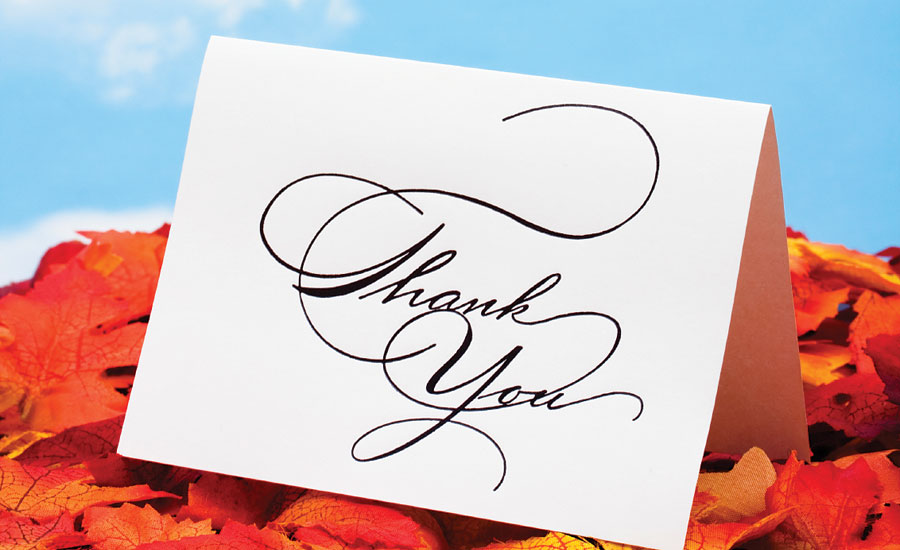You just get a feeling this is a good person and you may think, “You know, we could be friends.”
“Could be” is the key phrase, of course. Because I’m sure you realize it would take some specific actions to move from “we could be friends” to “we are friends.” And one of the things you’d have to do is stay in touch. You’d have to talk again. You’d have to be in contact with each other.
Now, if you’re starting to ask yourself why I’m telling you something so obvious, it’s because experience has shown me a lot of contractors act as if “staying in touch” is a principle they’ve never heard of.
And frankly, that’s scary.
In most cases, it costs you around $275 to $325 in marketing expenses to gain a new customer. If you don’t keep that customer, you’ve spent an awful lot for a one-time service call.
Each name in your database only represents “could be” customer potential. No, they’re not active customers any more than a one-time meeting with someone qualifies him as a friend. You’ve got to take action for that to happen.
The simple fact is this: Regular contact keeps customers. That involves a number of tried-and-true techniques, such as:
• Follow-up visits with thank-you cards, calls or emails. This simple act speaks volumes of your company and can boost your image. Have your technicians keep a stock of thank-you cards with prestamped envelopes and they can fill them out right after the service call. This two-minute task will let your customer know you appreciate his business.
• Offer maintenance agreements. How great is it to have a customer pay to remain a customer? This loyalty program is a mutual investment between the consumer and the provider. In a maintenance agreement, a customer could get a higher level of service, exclusive discounts, special treatment or even guarantees. What you get out of this is a reliable income stream. Maintenance agreements can even out your cash flow and provide a year-round income.
• Reactivation letters. Never throw away a list of names. An ex-customer will reactivate and spend money if you say the right things. Tell him that you miss him. If you’ve done something that might have offended him, tell him you want to make it right with a free gift or a discount. By getting a response from this list, you’ve saved money that was headed straight for the trash.
Equally important are holiday cards, customer-only direct mail offers and a customer retention newsletter.
If done correctly, that last item — the newsletter — is the centerpiece of a well-run customer retention program. In fact, if you only do one thing, make it a newsletter that goes out at least twice a year.
Fill it with interesting home care tidbits so it’s not perceived as advertising, and thus forges a far better image and strengthens the relationship. Better relationship equals better retention.
How to get a customer newsletter
1. You can do it yourself. If you’re prone to writing, designing, graphics, editorial layout and have experience crafting an informative newsletter that also can sell, then go for it! Many times I speak with contractors who do it themselves the first time, then “run dry” for info on subsequent efforts. Therefore, there’s option No. 2 …
2. Hire it out. An ad agency or newsletter creation service can create a special one for you, customized exactly as you want it. Unless your database is more than 10,000 or so names, then the costs can be significant. This is why there’s option No. 3 …
3. Use a syndicated newsletter. This is also known as semi-custom. It is very fast since the template for the newsletter and most of the content is already done, whichmakes it far less costly. Some companies offer ads for your company. Stay away from the overly slick, fluffy ones since they don’t appear local enough to consumers.
A good syndicated customer retention newsletter costs less than $6 a year per customer, including postage! Not a bad return on investment, especially since it involves returning customers. Every customer who has written you a check or swiped a card in the last 48 months should be receiving your newsletter.
All high-performing newsletters will have an online component. A QR code can link your printed newsletter to your online version. We’ve provided clients newsletter with an online newsletter portal that is updated monthly with new content and offers for their customers. This improves a company’s online presence, gives it content to be shared on social media channels and provides even more helpful and useful information to customers.
Sending a newsletter to your customers is like having a cup of coffee with them at regularly specified times each season. It’s low pressure and keeps your company at the top of your customers’ minds.
Always remember, your company’s current customers are the absolute No. 1 source of your future sales. Loyal customer will end up spending 33% more with your company and sending 107% more referrals to your business than nonloyal customers.
And speaking of referrals, newsletters are a great place to utilize referral requests. Most contractors think referrals “just happen” but that’s usually not the case. If each of your customers referred one other, then you would double your customer list right now … for free. Don’t be afraid to ask a customer if he knows someone who could use your help.
When you lose customers, you lose all their future business and all their referrals to your competition. When you keep customers, you keep that pool of sales for yourself. And isn’t that a scenario worth considering?





